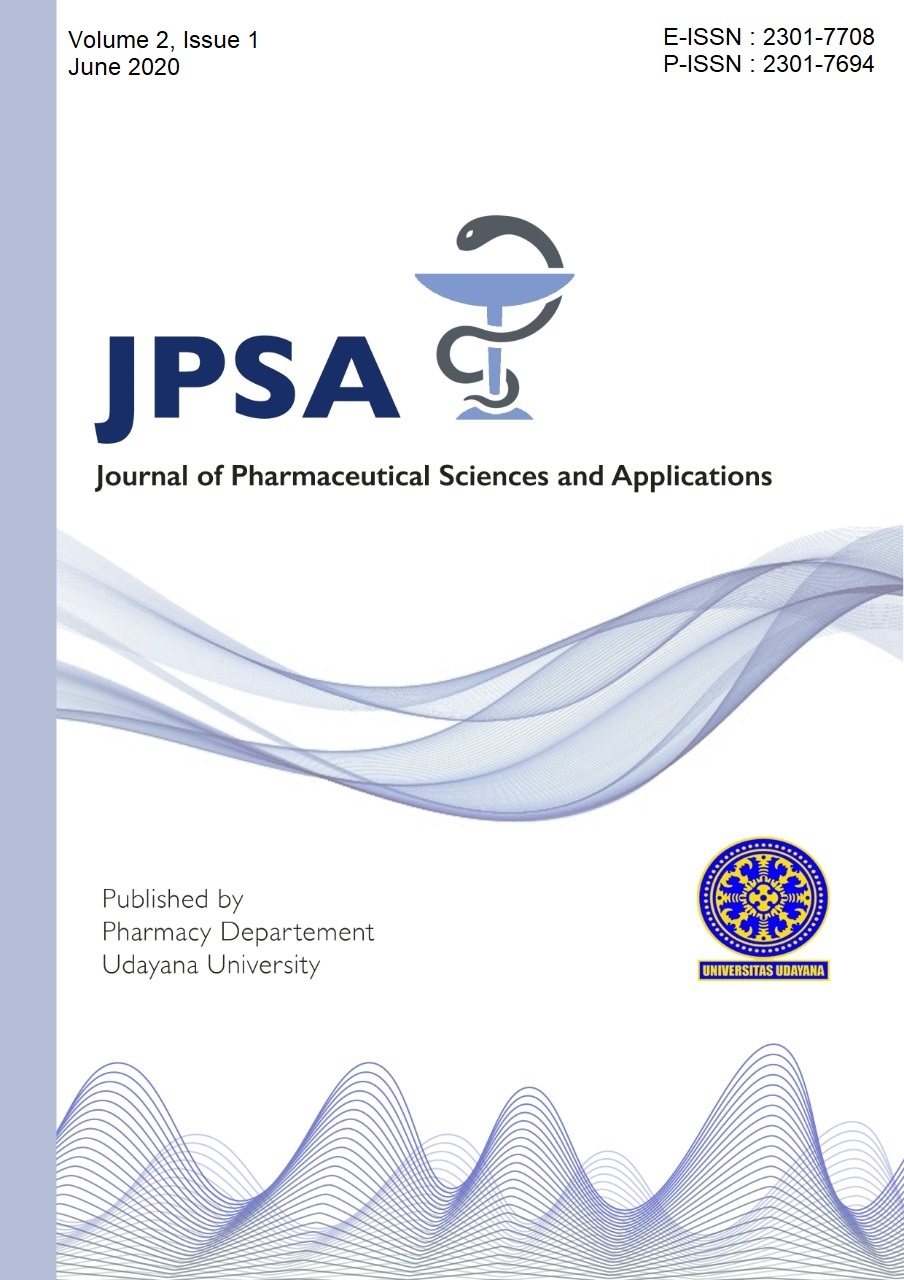STABILITY COMPARISON OF TULASI (Ocimum tenuiflorum L.) LEAF GEL HAND SANITIZER USING 0.5% AND 1% CMC-Na
Abstract
Background: Hand sanitizers contain 62% alcohol, softener and moisturizer. High alcohol content is able to irritate and make hands dry. A suitable moisturizer is needed for this preparation. Objective: The aim of this study is to evaluate the physical quality of gel hand sanitizer formulation of Ocimum tenuiflorum with CMC-Na as a gelling agent at a concentration of 0.5% and 1% CMC-Na. Methods: Data were collected at week-0,1,2,3,4, and replication is performed three times at each concentration of each measurement. The test results of the spread and adhesion data analysis using SPSS with a 95% confidence level. Results: Dispersive power and adhesion showed no significant difference (p <0.05) at week 0 and week 4 means second-hand sanitizer gel formulation concentration is not stable. Gel hand sanitizer leaves of Tulasi (Ocimum tenuiflorum) at a concentration of 1% CMC-Na stable from week 0 to week 3, while the concentration of 0.5% CMC-Na change at week 2. Gel hand sanitizer leaves of Tulasi (Ocimum tenuiflorum) with a gelling agent CMC-Na should need to be titrated. Conclusion: Gel hand sanitizer leaves of Tulasi (Ocimum tenuiflorum) that use concentrations of 1% CMC-Na as a gelling agent have a physical quality that is more stable than the organoleptic test concentration of 0.5% CMC-Na.
Keywords: Hand sanitizer, Ocimum tenuiflorum L., CMC-Na, Physical quality evaluation
Downloads
Authors who publish with this journal agree to the following terms:
Authors retain copyright and grant the journal right of first publication with the work simultaneously licensed under a Creative Commons Attribution License that allows others to share the work with an acknowledgment of the work's authorship and initial publication in this journal.
Authors are able to enter into separate, additional contractual arrangements for the non-exclusive distribution of the journal's published version of the work (e.g., post it to an institutional repository or publish it in a book), with an acknowledgment of its initial publication in this journal.
Authors are permitted and encouraged to post their work online (e.g., in institutional repositories or on their website) prior to and during the submission process, as it can lead to productive exchanges, as well as earlier and greater citation of published work. (See The Effect of Open Access).

This work is licensed under a Creative Commons Attribution 4.0 International License.


 HOME
HOME
















